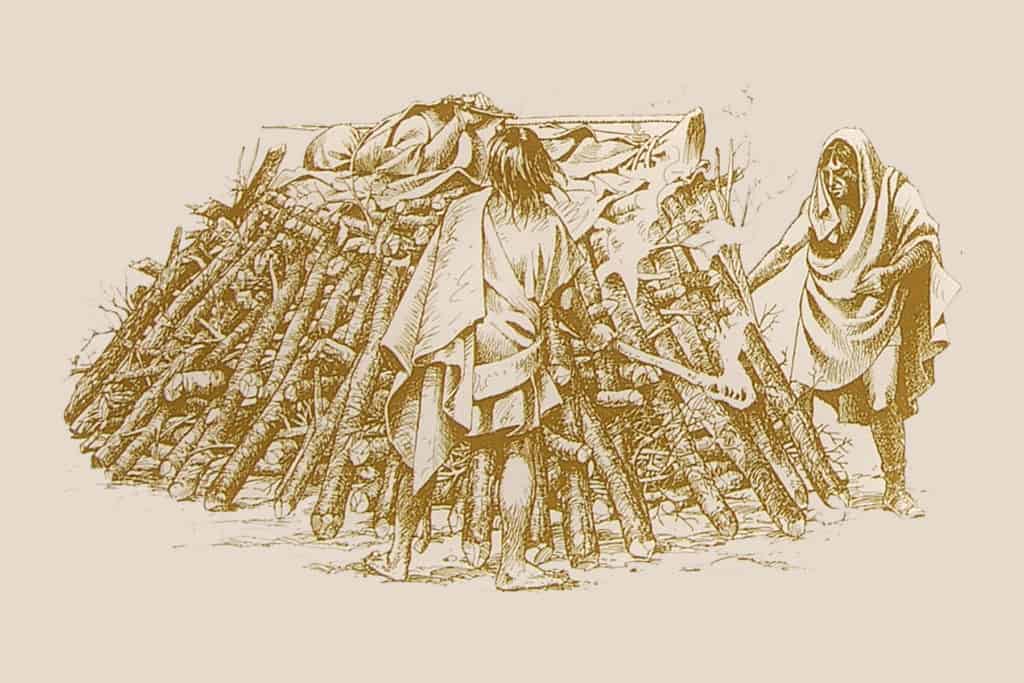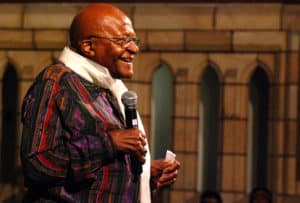Cremation is defined as the act of disposing of a person’s body after death by burning it to bone or using a liquid solution to break the body down into the most basic chemical elements. While this may seem like an extreme option to some people today, cremations have been a part of human culture since prehistoric times. The practice has also gone through a number of changes over the centuries.
Cremation: One of the Earliest Types of Funeral
Over 3,000 years ago the Greeks brought cremation to the Western World, but there is evidence the practice goes back more than 10,000 years. However, cremation as we know it today likely began in Europe during the Stone Age 5,000 years ago.
Stone Age Cremations
Around the time of 3,000 B.C. cremations were occurring in parts of Northern Europe and the Near East. In Russia, decorative urns from the late Stone Age were discovered, suggesting that cremations were done in that region of the world and the remains were kept.
Bronze Age and Mycenaean Age Cremations
By 2500 B.C., the use of cremation had spread to the rest of Europe. It was during this time that cemeteries for cremated remains began to develop.
By the Mycenaean Age in 1000 B.C., the Greeks were performing elaborate cremations. Over the next 200 years, cremation became the primary funeral service for Grecians. One of the primary reasons for the use of cremation was because the Greeks considered it to be more hygienic.
Iron Age and Norse Age Cremations
In Sweden and the surrounding areas during the Iron Age, cremations were the norm. Archeologists have actually discovered gravesites from that era in Scandinavia, which means burial was also practiced.
The Vikings (Norsemen) are well-known for viciously attacking and killing others in Europe, but they had very civilized funeral practices for their own people. You may have seen depictions of the Vikings casting the deceased off in a floating funeral pyre. It’s a very dramatic way to cremate, but it isn’t rooted in reality. While the Norse did cremate their dead, they also used burial and sometimes a combination of the two.
Early in the Norse Age, cremation on a funeral pyre was the most common practice, however, they were used on land, not on the water. There is evidence a few floating boat pyres were used, but it wasn’t common practice at that time and was usually reserved for high-ranking individuals like chieftains.
Roman Empire Cremations
The Roman Empire has had a profound impact on the modern world that exists today. However, it was Grecian influence that likely led to wide-spread use of cremation in Rome. Cremations became so common laws were issued to prevent cremations from taking place within Rome. Once the body was cremated, typically the remains were stored in a decorative urn.
As Christianity and Judaism rose to prominence in the late Roman Empire years, the practice of cremation waned. These religions considered cremation a pagan act and preferred burial. By 400 A.D. burials had all but replaced cremation.
While the exact origins and date of the first cremation will always remain unknown, one thing is certain. Cremation has been a common practice since recorded history began.
Practiced All Over the World
From the United States to China, countries and cultures all over the world use cremation. Of course, the ritual surrounding cremation and the process used can vary dramatically. Often, cremation services are linked to religious beliefs, last rites and location.
Hinduism – The Religion That Practices Cremation the Most
Hinduism is unique in that cremation is the mandated funeral service. That means cremation is required whenever a Hindu person dies. It’s referred to as antiesthi, which translates to “last sacrifice”. It’s believed that cremation helps the soul move on and facilitates rebirth. In India, open-air cremations are still a regular occurrence. Pyres are often built along the Ganges River near the holy city of Varanasi.
Judaism, Christianity and Islam – Religions That Limit Cremation
On the opposite end of the cremation spectrum are Judaism, Christianity and Islam. These three religions do not regularly practice cremation and instead support burial. Judaism and Christianity are somewhat accepting of cremation, however, Islam and the Eastern Orthodox Church are strongly against it to the point that cremation is prohibited.
Whether a religion, and subsequently a culture, supports cremation often comes down to interpretations of religious teachings. However, historical events also shape the opinion of church leaders and their followers. For example, some Jewish groups oppose cremation because of the Nazi’s use of mass cremation at concentration camps.
Military Honor
The military is another cultural establishment that’s almost as influential as religion. Not surprisingly, the history of cremation is closely tied to warfare in some cultures.
Thousands of years ago, cremation was a military honor that was used after battle, particularly by the Greeks. It largely began for practical purposes as a way to bring the remains of soldiers back home rather than leaving the bodies in a foreign land. The bodies of fallen soldiers would be burned on the battlefield. The remains would then be collected and transported back to the soldier’s home for entombment, usually in a columbarium.
COLUMBARIA: A columbarium is a structure that is built specifically for the purpose of storing ashes. Niches are built into the walls and urns with ashes are placed in them for display.
It’s believed that the Greeks picked up the practice from Northern Europe. Eventually, cremation came to be associated with valor and patriotism. It was thought to be a fitting funeral for a heroic soldier. The higher rank a fallen soldier was the larger the cremation pyre would be. It’s said that Achilles had a lavish cremation that involved dousing the flames with wine and his remains were put in a golden urn.
After the Greeks, the Romans picked up on the practice of cremating fallen soldiers at the battlefield. There would even be a short-term truce after a large battle so that the deceased soldiers could be cremated. During the cremation, other soldiers would throw in “trophies” from those they had slain in the battle.
War and Epidemics Continue the Cremation Practice
Even after cremation was no longer common and Christianity led to more burials, the practice was still used. During periods of war and epidemics cremation was commonly used as a way to honor the deceased since burials weren’t always possible. It was also needed due to the sheer number of people who died at once.
For example, during the Black Death plague in 1657 over 60,000 people in Italy were cremated in a single week because there was no other way to handle that many burials at once.
French Revolution Politicizes Cremation
Today, there is controversy surrounding cremation among some groups, but it wasn’t always that way. Cremation became a hotly politicized topic during the French Revolution when the revolutionaries promoted cremation to limit the Catholic church’s role in funeral services. As a result, the Catholic church was outspoken against cremation until the 1900s.
The event highlighted the social divide on the topic of cremation. It was also clear that as far back as the late 1700s people were beginning to express their concern over the way burials were conducted and to promote the use of cremation to give families more control over the process.
The Modernization of Cremation
Cremation as we know it now began roughly 150 years ago. In the late 1800s, the cremation process was modernized by Italian Professor Lodovico Brunetti and began to resemble what we have today. Professor Brunetti invented the cremation chamber, which was seen as a cleaner, more hygienic way to cremate a body. The advent of cremation chambers led to a resurgence of the practice in Europe and America at the end of the 19th Century. The movement was bolstered in Europe by Queen Victoria’s personal physician Sir Henry Thompson who was an advocate of cremation.
The advent of cremation chambers brought about crematoriums. What’s considered the first modern crematorium in the U.S. was opened in 1876 just three years after Brunetti debuted his cremation chamber concept at the Vienna Exposition. The first crematoriums in Europe were built in Germany and England during 1878.
These early crematoriums were owned and operated by professional cremation associations. The medical community also supported the construction of crematoriums because many doctors had concerns over the health impacts of cemeteries used for burial.
Just 14 years after the first crematorium in the U.S. opened 19 more went into operation from coast to coast. By 1913 there were over 52 crematoriums in America. Records show that over 10,000 cremations were performed that year. In 1975 there were five times more cremations in the U.S. Since then the number of cremations has steadily risen to the point that now cremation is more common than burial.
Other countries and cultures are experiencing a similar upward trend in cremations. As cremation technology evolves and the practice becomes widespread more people are expected to choose cremation over burial in the coming years.
RESOURCES:
How Did the Vikings Honor Their Dead? November 28, 2018. https://www.history.com/news/how-did-the-vikings-honor-their-dead
Cremation History. https://www.britannica.com/topic/cremation
A Brief History on Cremation in America. June 8, 2019. https://blogs.iu.edu/education/2019/06/08/a-brief-history-on-cremation-in-america/
History of Cremation. https://www.cremationassociation.org/page/HistoryOfCremation
How Cremations Work. https://science.howstuffworks.com/cremation6.htm
Statistics. July 18, 2019. https://www.nfda.org/news/statistics






